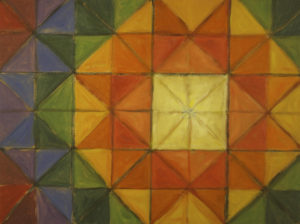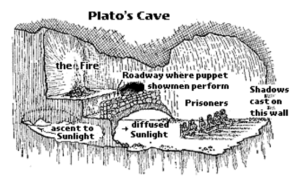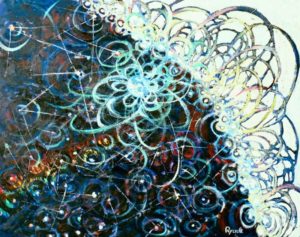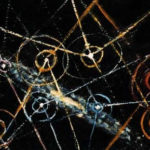Time is still not well understood in the science community. Simply, the best answer from physics is, “Time is what you read on the face of your clock.”
Here is what English physicist, mathematician and philosopher of science, Sir Roger Penrose said:
“It is my opinion that our present picture of physical reality, particularly in relation to the nature of time, is due for a grand shakeup – even greater, perhaps, than that which has already been provided by present-day relativity and quantum mechanics.”
Could this ‘grand shakeup’ be related to the motion of matter through space? It seems to explain gravity according to Einstein’s General Relativity theory of fields, and puts our motion through the background radiation in perspective. The push from below explains the force we feel on the souls of our feet. Plato was one of the last connections between the Ancient Egyptians and our times. The Great Pyramid was built about 2000 years before Plato lived and now, there has been about 2000 years since Plato did his work on science and philosophy. He was the physicist of his day and still today is recognized as the greatest western philosopher who ever lived.
ONE SECOND OF TIME
The science community of today has no real model for time. Since 1967, the official definition of a second is 9,192,631,770 cycles of the radiation that gets an atom of the element caesium to vibrate between two energy states. This frequency is about four times faster than a household microwave oven. The physicists’ equations say that time can move backwards as well as forward. This idea defies logic. Broken cups do not re-assemble themselves. We don’t have time travellers visiting us as far as we know. We need a model of time that makes sense.
Discovered in the 1970s our velocity through space is 600 km/sec, that’s 2.2 million kilometres per hour! At that speed, you could cross North America from Victoria, BC, to Halifax, NS, in seven and one half seconds! This speed of matter through the cosmic microwave background is the key to the duration of one second of time. How did scientists arrive at this duration for one second of time? Who first set the pace for one second of time?
THE HISTORY OF TIME
In keeping with the idea that some of the mysteries of the cosmos might have been hidden in the mythology of antiquity, it turns out we have nearly forgotten that the ancient Sumerians set the duration of one second of time. We need to ask how they arrived at this duration of time, but unfortunately they left no information about this. So typical of mythology, we have to figure it out ourselves.
If you have looked at the video model of the solar system, you see that matter is moving in one direction and because it is moving at such high speed, no nuclear matter can move in the opposite direction. You cannot realistically go back to 1969 and watch the Moon landing. The wave function won’t be where this event occurred! There is no way to travel backwards in time.
This is what the Sumerians did that surprisingly results from the relationship of motion, the speed of light and the pace of our solar system. It takes over eight minutes for light to travel from the Sun to the earth, about 500 seconds, varying seasonally. We are moving through space at 1/500th the speed of light. During the time light travels from the Sun to the earth, the earth, the Sun, the entire planetary system and our whole galaxy moves forward in space and in time by one light second!
This is a useful model for time and allows for a simple mathematical formulation:
The speed of light/Velocity of matter through the cosmic background radiation c/V = The Pace of Time.
THE COSMIC MICROWAVE BACKGROUND AND THE PACE OF TIME
Microwave radiation pervades space and is now considered to be the real cosmic rest frame of the universe, the fabric of space. The Pace of Time is equal to the ratio of the speed of light to the velocity of atomic motion through space. Our speed of 600 km/sec creates a ratio of light to particle velocity of approximately 500:1; therefore, our atoms move one pace, as light moves 500 paces of the same length.
The Flow of Time or the Pace of matter = c/V; c = speed of light, V = the velocity of atoms through the cosmic microwave background permeating space.
This is approximately 600 kilometres per second, 2.2 million kilometres per hour or a million and a quarter miles an hour. This velocity is hard to imagine. The velocities we are used to fall in a range so small that even the speed of jet planes or rockets is a tiny fraction of this velocity. If you were to blink once every minute, you would approximate the pace of matter through space. The blink would represent the motion, while the remainder of that minute would be absolute rest against the background radiation. Our atoms are ‘at rest’ almost all the time.
The most exciting thing about our motion is how it works. This velocity is not a regular motion, like a car moving on a highway or even a rocket moving through space. It is a stepping motion, more like how we walk or how a four legged animal moves. Each step is what we would call a jerk, with our atoms stepping at the speed of light, then stopping for the c/V count (in our example a count to 500). In this manner, the pyramid shaped particle duplicates itself by destruction and reconstruction in the adjacent square field. After reconstruction in the adjacent square, the particle pauses, resting for the 500 count if our velocity = 1/500 c. The particle is ‘at rest’ against the whole cosmic background, not moving until the count reaches 500; then, the next transition takes place. As the progression continues, virtual particles are emitted periodically by the central particle.

Mathematically, this stepping motion is called a jerk, the first derivative of acceleration and the third derivative of position. It takes the mathematical form of acceleration divided by time or gravity/sec. Keep in mind that we are at rest against the cosmic background of the whole universe for 99.8% of the time! This is why light is always measured as exactly 299,792,458 metres per second and why the Michelson-Morley experiment showed that motion makes no difference in the working of the cosmos. When we measure the speed of light, no matter how fast our motion is, even if it were half the speed of light, our atoms are always at rest against this cosmic background during a measurement or observation.
With this conception of motion being ‘at rest’ for most of the time, we should reconsider the observations of distant galaxies perceived to be receding and accelerating. This is illusory because of the intermittent motion and our atoms being ‘at rest’ for 99.8% of the time. With every atom in the cosmos behaving ‘at rest’ against the cosmic background, we have set the stage for a new look at quantum mechanics and the refutation of an expanding an accelerating universe. If our atoms are ‘at rest’ then there can be no accelerating motion. This observation is incorrect. Plato was criticized for suggesting that astronomers cannot learn anything from the observed motions of celestial bodies.
THE ARROW OF TIME
When we realize that our motion through space is not only intermittent but also uni-directional, one way and one way only, we find the elusive ‘arrow of time’. It is just as you might imagine, a one way street, a direction in space where there is no way to go backwards in time or have broken teacups re-assemble. You might think that such high speeds are dangerous and you’d be right. The most dangerous place in the cosmos is the future and that is where we all live, right on the edge of time, right on the edge of the universe – the future, the moment NOW!
TIME AND THE QUANTUM JUMP
Once an object is no longer being observed, it begins to spread out, so to speak, across the fabric of space. The particle videos show the central particle emitting periodic virtual copies of itself forming a line spreading through space. The main particle, a proton or any spin one-half particle, continues its periodic motion, stepping left then right then left as in the video. This particle like every other unobserved particle in the universe continues the same progression. This conception is frozen in time and immortalized in stone in the nine pyramids at the Giza plateau. This particle and all its emitted virtual particles will carry the same information set in time since the last observation.
It will continue this pattern until a measurement or observation takes place, and the particle will then jump to the new calculated position no matter how far away it is from the original. This quantum jump would seem to travel faster than light, but, in fact, that is not the case because the information is dated back to the last observation. In other words, the particle while unobserved, is mapping out all the positions it could occupy in the future. The universe is mapping itself into existence and that existence is realized only during a measurement or observation. This is how you explain quantum mechanics!
There is no law broken because the previously mapped information is from the past. The original particle had mapped every possible position it could have moved to and now, upon observation chooses the new calculated position.
REALITY
When examining the cosmos, it is important to consider how we see the world. It is dark inside our cranium. We judge the visual world from information collected on postage stamp-sized retinas. Observations or measurements bring the universe into material existence but unobserved, the universe exists as a wave function. This is duality, matter existing as a wave and appearing as an object. Quantum Mechanics is the wild card in our reality.
Plato’s “Allegory of the Cave” still stands as our best description of reality.

Plato was one of the last people from Western Civilization to actually have visited the ancient Egyptians while they were still building along the Nile. Many Greeks learned from the Egyptians, including Herodotus, Plutarch and Plato.
From Wikipedia:
“Plato has Socrates describe a group of people who have lived chained to the wall of a cave all of their lives, facing a blank wall. The people watch shadows projected on the wall from objects passing in front of a fire behind them, and give names to these shadows. The shadows are the prisoners’ reality.”
https://en.wikipedia.org/wiki/Allegory_of_the_Cave
It is well documented that the Greeks, after Alexander’s liberation of Egypt from the Persians travelled throughout Egypt, learning from the Egyptian priests. Plato travelled extensively and learned much which he then used in his school in Greece. One of the things he taught was his ‘Theory of Forms’, which asserts that the physical realm is only a shadow or image of the true reality of the Realm of Forms. According to Plato The Forms are abstract, perfect, unchanging concepts or ideals that transcend time and space; they exist in the Realm of Forms.
Until recently we were taught that western civilization began in Greece. It seems that this is not entirely true. Many important Greek philosophers were educated in Egypt, including Plato who spent 13 years in Egypt. Ancient Egypt is considered by many cultures to be the “Mother of Civilization” or, as I now see it, all roads came from Egypt.
Plato (Timaeus (37)) on Time:
When the father and creator saw the creature which he had made moving and living, the created image of the eternal gods, he rejoiced, and in his joy determined to make the copy still more like the original; and as this was eternal, he sought to make the universe eternal, so far as might be. Now the nature of the ideal being was everlasting, but to bestow this attribute in its fullness upon a creature was impossible. Wherefore he resolved to have a moving image of eternity, and when he set in order the heaven, he made this image eternal but moving according to number, while eternity itself rests in unity; and this image we call time. For there were no days and nights and months and years before the heaven was created, but when he constructed the heaven he created them also. They are all parts of time, and the past and future are created species of time, which we unconsciously but wrongly transfer to the eternal essence; for we say that he “was,” he “is,” he “will be,” but the truth is that “is” alone is properly attributed to him, and that “was” and “will be” are only to be spoken of becoming in time, for they are motions, but that which is immovably the same cannot become older or younger, nor is subject at all to any of those states which affect moving and sensible things and of which generation imitates eternity and revolves according to a law of number. Moreover, when we say that what has become and is become and what becomes is becoming, and that what will become is about to become and that the non-existent is non-existent – all these are inaccurate modes of expression. But perhaps this whole subject will be more suitably discussed on some other occasion.
Time, then, and the heaven came into being at the same instant in order that, having been created together, if ever there was to be a dissolution of them they might be dissolved together. It was framed after the pattern of the eternal nature, that it might resemble this as far as was possible, for the pattern exists from eternity, and the created heaven has been, and is, and will be, in all time.
Plato (Timaeus (37))





